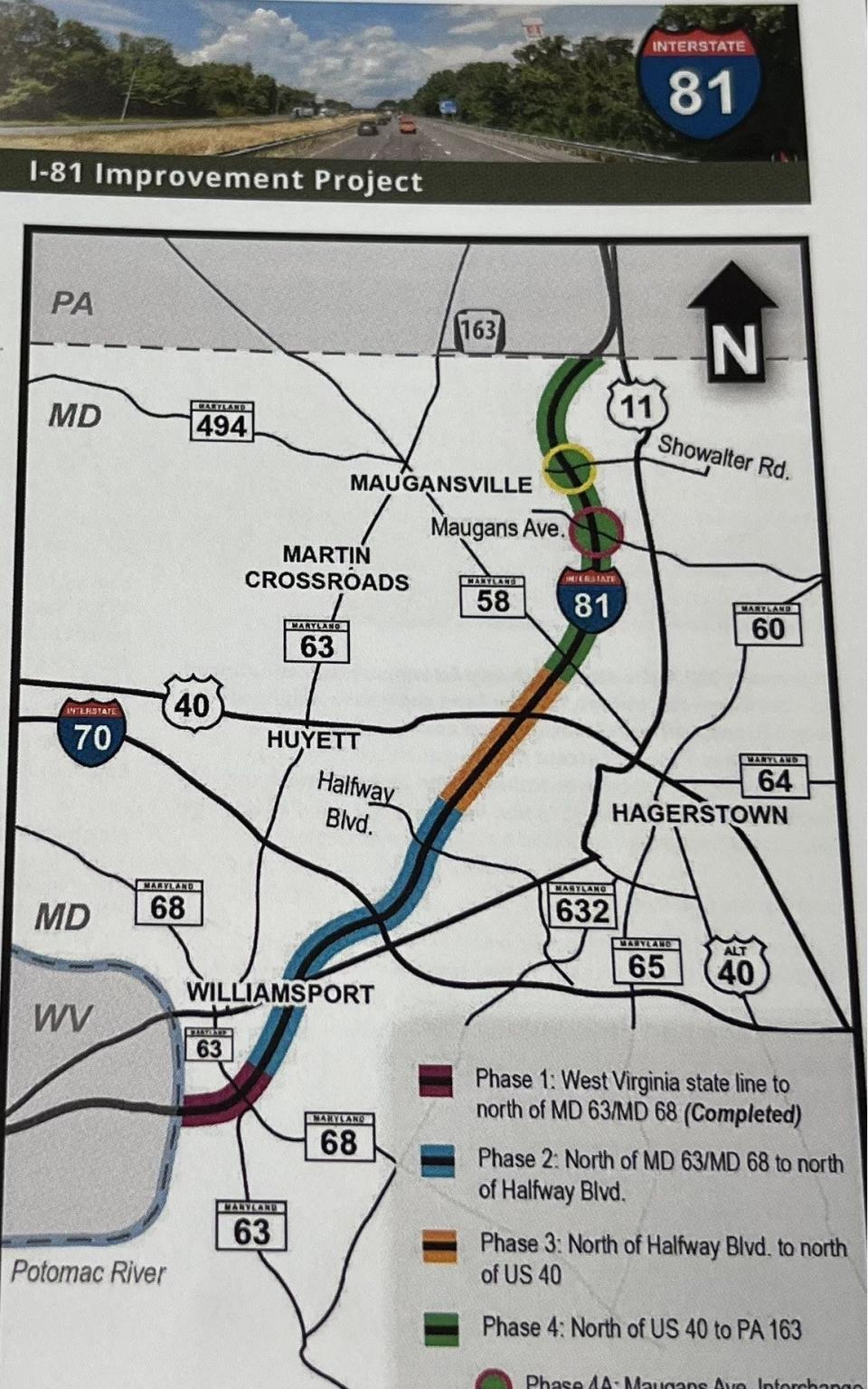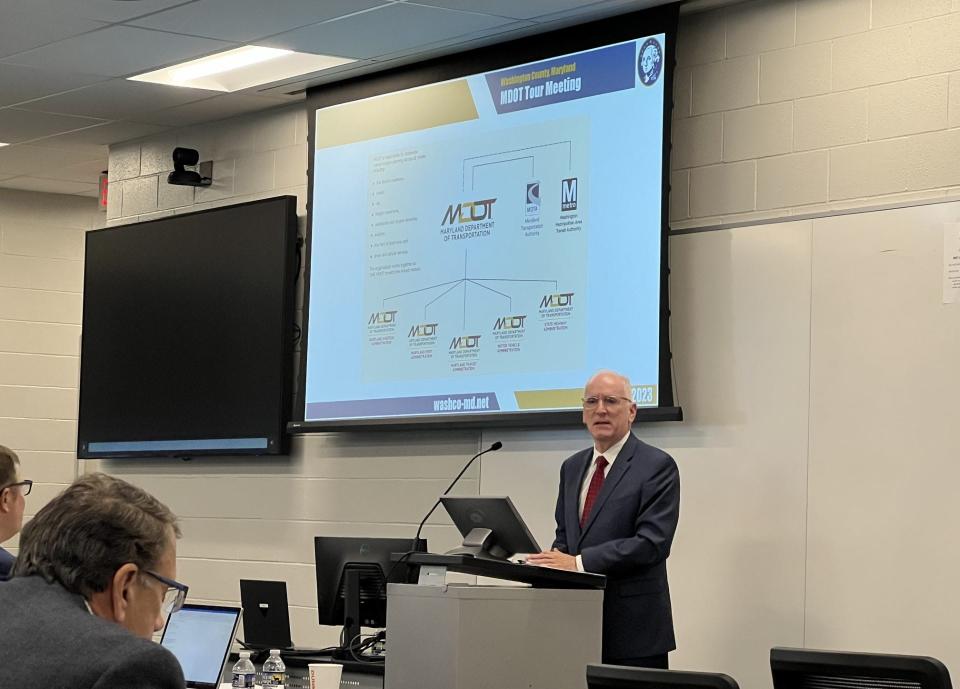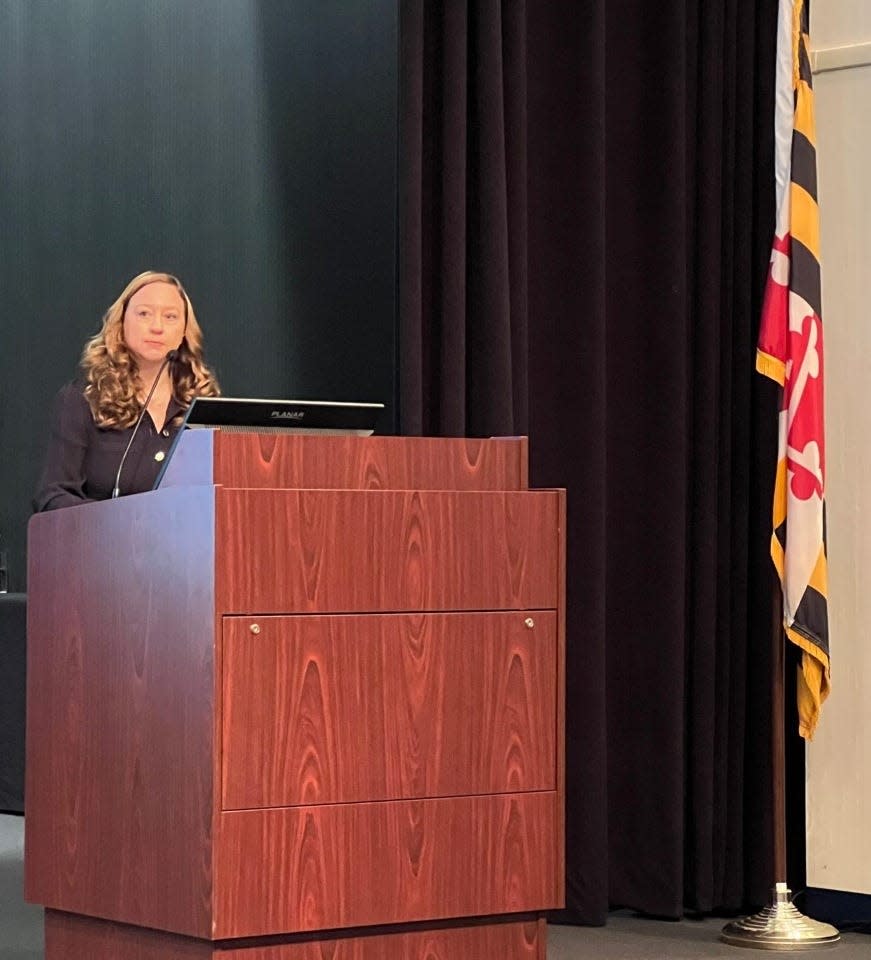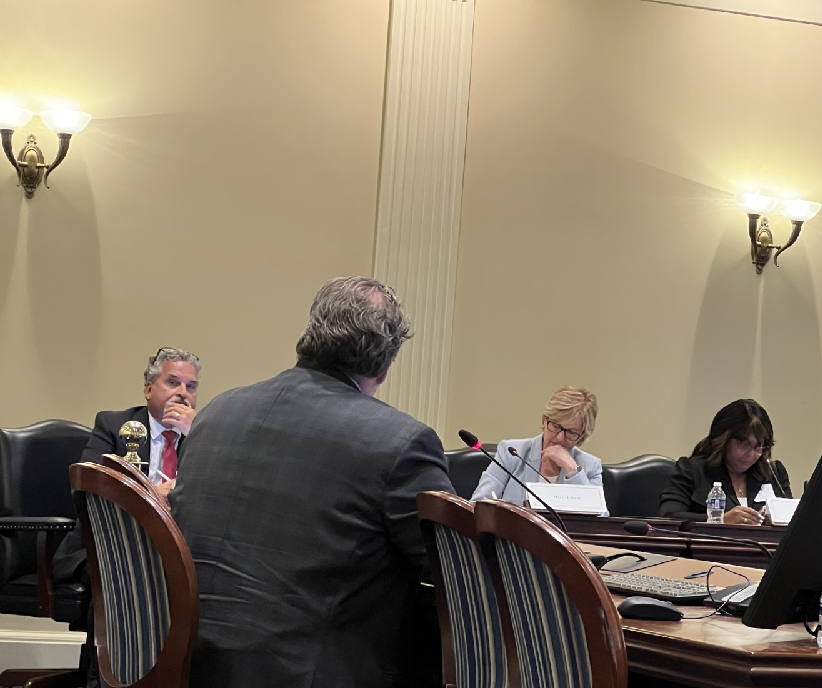State and local officials talk safety as funds discussed for I-81 project completion
Washington County Commissioner Randy Wagner has lived in the Western Maryland county for 73 years and spent the last 57 driving on its roads. Lately he’s taken new direction, putting “avoid highways” into his GPS.
A reason: safety, a word that came up over a dozen times during a Washington County transportation priorities meeting held with state and local officials on Thursday, coincidentally at the Washington County Public Safety Training Center.
“We’re on the same page,” Wagner told state officials, including Maryland Transportation Secretary Paul Wiedefeld, after much of the discussion centered on improvements to Interstate 81. “It’s the funding, we know that,” he said, at meeting’s close.

State Sen. Paul Corderman, R-Washington/Frederick, called the I-81 project the “elephant in the room.” The 12-mile stretch of highway is scheduled to be widened, but at present, only the first two phases is paid for, accounting for about half of the length of the road’s Maryland portion.
The project received roughly $100 million for phase 2 funds, about 90% of which came from the federal government in the Bipartisan Infrastructure Law enacted in November 2021. Phase 2 calls for adding a lane in each direction, widening the road from four to six lanes total for a stretch of 3.5 miles between Md. 63/Md. 68 (Lappans Road) near Williamsport to the CSX bridges north of Halfway Boulevard. Construction on phase 2 is scheduled to begin in fiscal year 2026, which begins on July 1, 2025.
More: The road for I-81 funding continues with new administration, transportation secretary
Elected officials push for more funding
Before that construction even begins, the push from local officials for more funding to finish the full project continued on Thursday.
“There’s no funding for the next six years,” said Corderman, the top Republican on the state Senate Budget and Tax Committee, referring to planning and engineering for phases 3 and 4. “It’s going to be another 15 to 20 years before this full thing is done. That can’t be the acceptable standard, not only for our region, but for the state.”
He highlighted safety as a box that is not checked on the state’s goals for the project, as outlined in the draft Maryland Consolidated Transportation Program that plans projects up to 2029. Four individuals have died after crashes on the highway this year alone, according to state data.
Referring to Corderman’s pointing out that safety is not a listed state goal of the project, the transportation secretary acknowledged the concerns of the county’s senior senator.

“I’m going to correct that,” said Wiedefeld, in response, “that (safety box) should be checked.”
The secretary continued with his personal experience on the road.
“From my perspective, having been out there,” he said, “the daily experience that people have there is as much of a safety issue as it is all these other issues.”
“Economic opportunity & reduce congestion” was one box that was checked on the state’s plan for phase 2 of the road widening.
Safety and seatbelts
As for the crashes, one state official present at the meeting indicated there are things that residents can do to be safer. In an interview after the meeting, Motor Vehicle Administrator Chrissy Nizer pointed out several reasons how roadway run-ins do not have anything to do with the roads themselves, but choices made by those people using them.
“It’s people not buckling up, and folks are still driving impaired, and then distraction in terms of driving,” she said, “those crash causes are all controlled by the driver.”
Half of the 14 fatal crashes in Washington County this year came from distracted driving, according to the Maryland Department of Transportation’s data dashboard. Over a fifth of the crashes came from a driver’s impairment.

More: Officials unveil dashboard to track roadway crashes
Seatbelt usage also fell in Washington County last year, according to an annual roadside survey of observed seat belt usage conducted by MVA’s Highway Safety Office.
“The statewide observed seat belt usage rate in 2019-2023 among drivers and front seat passengers of all vehicles was 91.3%, an increase compared to 2018-2022 (90.9%),” said MVA Spokesperson Ashley Millner, in an email. “Washington County’s overall observed seat belt usage rate in 2019-2023 was lower than the statewide rate at 86.9%, and a decrease from 2018-2022 (88.8%).”
Nizer also pointed to the importance of seatbelt use in both the front and back seats as another safety precaution.
I-81 update a decades-long project, former county commissioner says
Former Washington County Commissioner Jim Kercheval, a current member of the state-authorized Transportation Revenue and Infrastructure Needs commission, effectively mediated local-state tension on the I-81 project with a bit of humor.
“As we get a little frustrated as this is our 20-something year pushing 81, I will say it’s kind of hard to push that frustration out on anybody,” he said. “Everybody I’ve always worked with, you guys are good people" he said of the state officials.
“You care about it, you understand it. I don’t really have anybody to get mad at except for Kevin cause he’s leaving,” said Kercheval, referring to the county’s director of transit Kevin Cerrone, retiring soon after 29 years in the post.

The former county commissioner and executive director of the Greater Hagerstown Committee mentioned truck traffic from the millions of square feet of warehouses being built recently in the county. Amazon, for instance, has a 1 million-square-foot fulfillment center on Wesel Boulevard.
“Truck congestion is something I don’t think is really understood in the state,” Kercheval told the dozens assembled in the room. He said more money for transportation projects in the state is the “long term solution” for road projects.
Transportation revenue needed at the state level
Corderman, too, pointed to the challenge facing the state in an interview after the meeting.
“There’s a $2 billion shortfall in that (2024-2029) CTP right now,” he said. “That’s billion with a B.”
With the gas tax revenues diminishing, Wiedefeld called the question of transportation funding one that is being wrestled with nationally and internationally.
More: With gas tax revenue diminishing, Maryland commission meets to find new revenue for roads
As for why the portion of the project that has already received funding hasn’t been finished already, the secretary said, “You need the funding to start to do the hard work.”
“Whether it’s working with communities, working with design, obviously getting into construction,” said Wiedefeld, in an interview after the meeting, “all of that takes time. We try to streamline as best we can.”
He pointed to the “partnership” between the state and local officials during the meeting. “That’s what you sensed in the room, and I think that’s very helpful,” he said.
Dwight A. Weingarten is an investigative reporter, covering the Maryland State House and state issues. He can be reached at dweingarten@gannett.com or on Twitter at @DwightWeingart2.
This article originally appeared on Salisbury Daily Times: State and local officials talk safety as funds discussed for I-81

